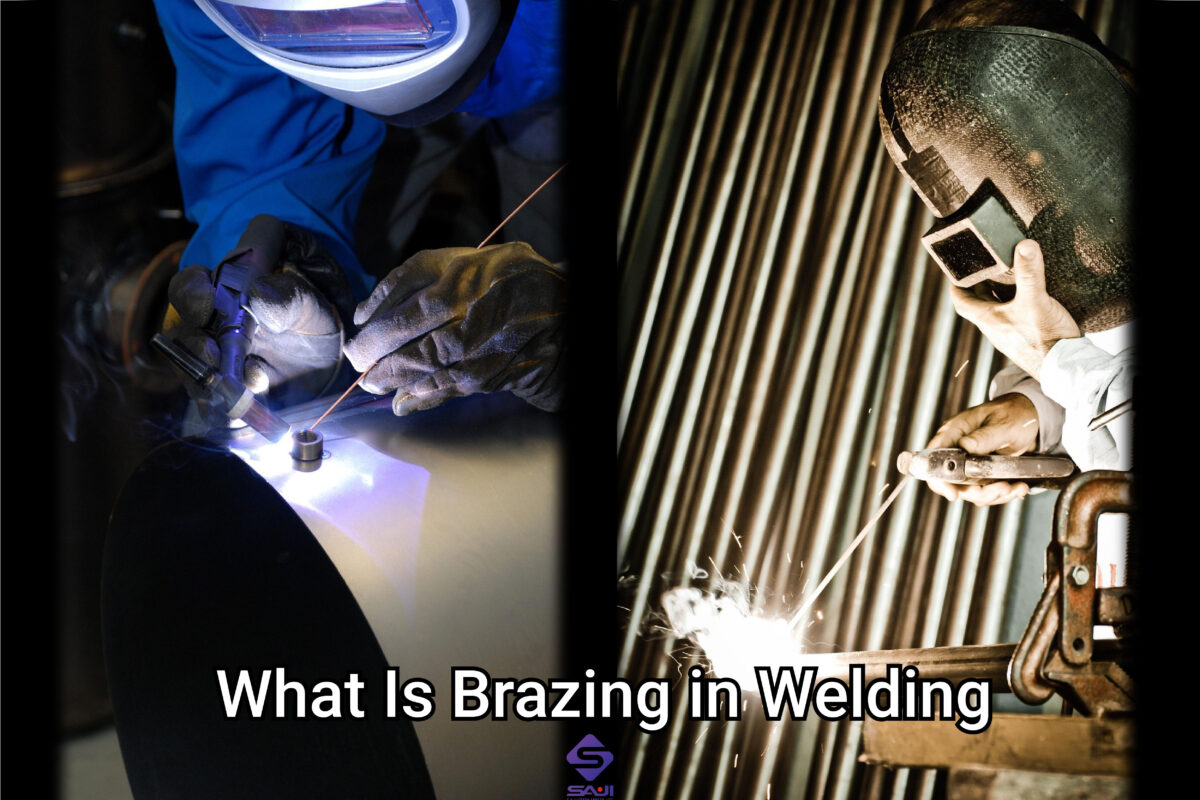What Is Brazing in Welding?
Brazing Welding is a process in which metals are joined by melting a filler metal into the joint to create strong permanent bonds. Brazing requires a small joint spacing to allow capillary action to draw the filler metal into the joint when the parts reach the proper phase temperature above 840°F (450°C).
Soldering vs. Welding
Soldering is classified by the AWS as a liquid-solid phase bonding process. Liquid means that the filler metal is melted, and solid means that the base material or materials are not melted.
Unlike welding, soldering does not involve melting the work pieces. The main difference between soldering and welding is the heat source. Soldering is applied via torch, furnace, induction, dipped or resistance as heat sources take place at a temperature below 840°F (450°C), whereas arc welding uses electricity as a heat source reaching temperatures of roughly 10,000 degrees Fahrenheit.
Brazing vs. Welding
Brazing is also classified by the AWS as a liquid-solid phase bonding process. Liquid means that the filler metal is melted, and solid means that the base material or materials are not melted.
Unlike welding, brazing does not involve melting the work pieces. The main difference between brazing and arc welding is the heat source. Brazing is applied via torch, furnace, induction, dipped or resistance as heat sources occur at a temperature above 840°F (450°C), whereas arc welding uses electricity as a heat source reaching temperatures of roughly 10,000 degrees Fahrenheit.
Brazing vs. Soldering
The only difference between soldering and brazing is the temperature at which each process takes place. Soldering takes place at a temperature below 840°F (450°C), and brazing occurs at a temperature above 840°F (450°C).
Advantages of Brazing and Soldering
Some advantages of brazing and soldering as compared to other methods of joining include the following:
- Low temperature
- May be permanently or temporarily joined
- Dissimilar materials can be joined
- Speed of joining
- Less chance of damaging parts
- Slow rate of heating and cooling
- Parts of varying thicknesses can be joined
- Easy realignment
Brazing and soldering are processes that have many great advantages but are often overlooked when a joining process is being selected. The ability to join many different materials with a limited variety of fluxes and filler metals reduces the need for a large inventory of materials, which can result in great cost savings for a small business, home shop or farm.
l l l l l l l l l l l l l l l l l l l l l l l l l l l l l l l l l l l l l l l l l l l l l l l l l l l l l l l l l l l l l l l l l l l l l l l l l l l
สนใจดูรายละเอียดสินค้าอื่นๆ ที่นี่ ===> SAJI Shop
ที่มา ===> www.uti.edu/

